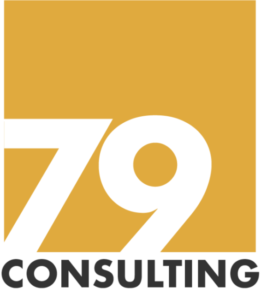
Optimize Inventory With NetSuite Demand Planning
Does your procurement team spend significant time and effort on demand forecasting—only to still be inaccurate? Demand planning is a supply chain management process of forecasting, or predicting, the demand for products to ensure they can be delivered to satisfy customer’s requested/expected delivery dates. The goal here is to strike a balance between having sufficient inventory levels to meet customer needs without producing a surplus. Ultimately excess product on the shelf is capital tied up.
NetSuite’s powerful Demand Planning module can quickly take your business from reactionary to proactive! It comes packed with features that can help your organization better meet customer needs through an efficient demand planning process. With Demand Planning, purchasing and inventory managers can accurately predict demand based on historical data, sales forecasts, average trends and seasonal fluctuations. NetSuite Demand Planning gives you full flexibility and control in setting timeframes, preferred stock levels and other parameters, while offering built-in functionalities that help streamline and automate critical tasks. Demand Planning uses historical and seasonal demand records to track anticipated supply and demand, pinpointing when you need to reorder items and in what quantities, in order to maintain optimal stock levels.
Demand Planning in NetSuite can help to:
- Optimize inventory levels
- Increase Inventory turns
- Reduce costs with procurement consolidation
- Simplify the purchase order generation process
- Produce available to promise dates for sales shipments
How do Demand Plans work?
- A demand plan records the expected future demand for an item based on previous or projected demand.
- NetSuite allows you to automatically generated demand plans, or to manually enter an item demand plan.
- The user can elect to analyze demand by using one of the following methods:
- Set a time frame for examining an item’s historical sales data, and forecast future sales with similar trends.
- Use the current entered demand based on open opportunities, quotes and existing sales orders.
What are Supply Plans?
- Supply Plans are the recorded recommended schedule for procuring and/or manufacturing of additional supply of an item.
- NetSuite utilizes two options for replenishment methods for an item- Reorder Point and Time Phased.
- NetSuite will incorporate reorder points, lead times, safety stock, preferred stock level along with current demand by location when calculating the item supply plan.
- Multi tiered assemblies are considered, the generated supply plans will suggest (or auto generate) sub-assembly work orders as well as components required for the build.
Using demand plans and supply plans helps you maintain an optimal level of inventory for items that have fluctuating demand.
Available Planning Methods
- Linear Regression: Uses previous demand to project future inventory based on the ordinary least-square regression method.
- Moving Average: Uses the moving average of historical demand to calculate the overall average stock level needed, and then project future stock levels using that overall average.
- Seasonal Average: Uses previous demand to examine the seasonal trend of inventory flow, and then project a similar seasonal trend for future stock levels.
- Sales Forecast: When using NetSuite for sales operations, this option uses forward looking sales forecast data (such as opportunities, estimates, sales orders, or work orders) to project inventory demand.
NetSuite’s demand planning can also be used to offer sales teams important product availability information during the sales cycle process by introducing an expected shipment date by the automatically calculated Available to Promise function. Available to Promise or ATP, included with NetSuite demand planning can be determined by one of two different calculations:
- Cumulative ATP with Look Ahead: Using the Cumulative ATP with Look Ahead method, supply estimates are cumulative based on all outstanding orders within a horizon. This allows you to account for shortages that may occur in the future.
- Discrete ATP: The discrete ATP method reviews the amount available in each supply order and provides an available date for the given quantity.
These supply calculations are based on future-dated non-posting transactions: purchase orders, sales orders and work orders. They offer added visibility for Purchasing and Sales departments into the projected ship date of goods during the ordering process. Allows the user to check item availability based on open/outstanding supply type orders, and demand based orders.
We can check all of our demand and supply needs by viewing the Gross Requirements Inquiry. The Gross Requirements Inquiry provides an overview of the progressive supply and demand cycle by listing quantities required and quantities supplied on each transaction date listed. Each transaction and date is listed along with the more-on-hand or less-on-hand quantity of the transaction, as well as the resulting total quantity on hand for the item.
Tvarana Inventory Count SuiteApp
Tvarana’s Inventory Count SuiteApp is a solution designed to make inventory counting a breeze. NetSuite offers users a native inventory counting functionality, however the process isn’t all that user-friendly and can prove to be quite tedious and time-consuming. Inventory Count’s bundle of features allows users to perform regular warehouse counts and post inventory adjustments and record them in NetSuite, while optimizing on time and effort. Inventory Count helps users sync the physical warehouse to inventory on NetSuite and utilizes three types of counts:
- Serialized
- Inventory
- Lot
Read more about Inventory Count here.
Do you need help with inventory optimization? Our team of NetSuite consultants can show you how to leverage NetSuite’s Demand Planning or Inventory Count to get your supply chain under control.









